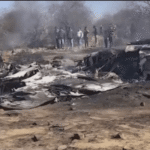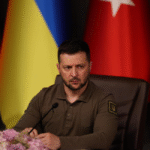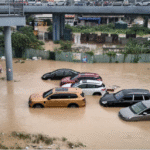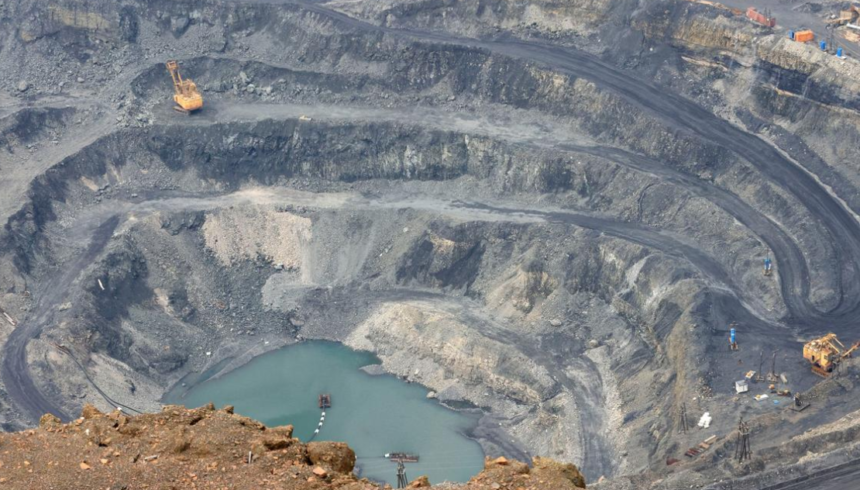In recent months, the region surrounding the Porgera Valley gold mine in Papua New Guinea (PNG) has become the epicenter of intense violence, resulting in the deaths of numerous people due to escalating tribal conflicts. The unrest, which began in August 2024, has seen deadly shootouts between tribal warriors and rival factions, and has caused widespread chaos, displacement, and fear. Located in the remote highlands, the Porgera Valley is home to one of PNG’s largest and most lucrative gold deposits, and it has long been a source of both wealth and conflict for the local population. This most recent bout of violence has been linked to the illegal mining activities in the region, further complicating an already volatile situation.
The Papua New Guinea police and local authorities have attributed the violence to disputes between “illegal miners” and local landowners, which began after a landowner in the Porgera Valley was attacked and left with life-threatening injuries. In response, tribal warriors loyal to the landowner launched retaliatory attacks, leading to an escalating cycle of violence that has since spiraled out of control. The situation has brought attention to the complex socio-economic, legal, and environmental issues that surround resource extraction in Papua New Guinea, where gold mines often serve as a flashpoint for conflict.
In this article, we explore the roots of the conflict, the nature of the ongoing violence, the challenges faced by law enforcement and the government, and the broader implications of the unrest for Papua New Guinea’s future.
The Porgera Gold Mine: A Source of Conflict
The Porgera gold mine, located in the remote Enga Province of Papua New Guinea, is one of the world’s largest and richest gold mines. It has been operational since 1990, and over the years, it has produced billions of dollars in gold, contributing significantly to the country’s economy. However, the wealth generated by the mine has not always trickled down to the local communities, and tensions over land ownership, mining rights, and resource distribution have simmered for decades.
For many indigenous landowners in the Porgera Valley, the mine represents both opportunity and exploitation. While some landowners have benefited financially from compensation agreements with the mining companies, others feel that they have been excluded from the wealth generated by the mine. The perceived inequality and lack of meaningful participation in the benefits of mining have fueled resentment, leading to sporadic acts of violence over the years.
Illegal mining, in particular, has become a significant problem in the region. Thousands of local residents and outsiders engage in unauthorized mining operations, often at great personal risk, in a bid to extract gold from the rich deposits in the area. These illegal miners, often referred to as “galamsey” miners in local parlance, have clashed with landowners and mining security forces on numerous occasions. The most recent outbreak of violence is part of this larger pattern of tension between legal and illegal mining interests in the region.
The August Incident: Spark of the Conflict
The current wave of violence in the Porgera Valley can be traced back to a specific incident that occurred in August 2024. According to local reports, a group of illegal miners attacked a landowner who had confronted them for trespassing on his land near the Porgera gold mine. The attack left the landowner with life-threatening injuries, sparking outrage among his tribal kin.
In response to the assault, Porgera Valley warriors from the landowner’s tribe launched a series of retaliatory attacks on the illegal miners and their supporters. These attacks quickly escalated into a broader conflict, drawing in multiple tribal factions with long-standing grievances over land ownership, mining rights, and access to resources. What began as a localized dispute over illegal mining soon spiraled into a deadly conflict that engulfed entire communities.
The Porgera Valley use of firearms and other deadly weapons has made the situation even more dangerous, Porgera Valley with reports of shootouts between heavily armed tribal warriors becoming increasingly common. While exact casualty figures are difficult to ascertain due to the remote nature of the region and the ongoing violence, police and local authorities have confirmed that many people have been killed in the fighting. Scores of others have been injured, and thousands of residents have been displaced as entire villages have been abandoned in the face of the violence.
Law Enforcement Struggles to Contain the Violence
The Porgera Valley Papua New Guinea police force, already stretched thin in a country with vast and difficult-to-access terrain, has struggled to contain the violence in the Porgera Valley. The remote location of the conflict, combined with the rugged geography of the highlands, makes it challenging for law enforcement to maintain a sustained presence in the area. Moreover, the tribal nature of the conflict complicates efforts to restore peace, as many of the warriors involved are fiercely loyal to their kin and view the violence as a matter of honor and retribution.
Local police have appealed to both the national government and the mining companies operating in the region for additional resources and support. However, bringing an end to the violence is no easy task. The use of high-powered firearms by tribal warriors has increased the lethality of the conflict, and the deeply entrenched grievances between rival tribes make mediation and negotiation difficult.
Despite these challenges, Porgera Valley police have made some efforts to broker peace between the warring factions. In recent weeks, tribal leaders have been called upon to engage in dialogue to prevent further bloodshed, but these efforts have so far met with limited success. The volatile situation on the ground, combined with the deeply personal nature of the conflict, has made it difficult to achieve lasting peace.
Impact on Local Communities
The ongoing violence has had a devastating impact on local communities in the Porgera Valley. Entire villages have been caught in the crossfire between rival factions, with homes and property being destroyed in the fighting. Many families have been forced to flee their homes, seeking refuge in nearby towns or even in the wilderness, where they face a lack of access to basic necessities such as food, clean water, and medical care.
The disruption caused by the conflict has also had a significant economic impact. Porgera Valley Many local businesses have been forced to close, and agricultural activities, which provide a livelihood for much of the population, have been disrupted by the violence. In a region where poverty and unemployment are already major issues, the ongoing unrest has exacerbated the challenges faced by local residents.
Women and children, in particular, are bearing the brunt of the conflict. Displaced from their homes and often separated from their families, many are vulnerable to violence, exploitation, and abuse. Humanitarian organizations operating in the region have raised concerns about the lack of adequate shelter, healthcare, and protection for those affected by the fighting.
Role of the Mining Companies
The Porgera gold mine is operated by a consortium of international mining companies, and Porgera Valleythese companies have faced criticism for their role in the conflict. While the companies have taken steps to provide security for their operations and protect their assets, they have been accused of neglecting the needs of the local population and failing to address the underlying grievances that have fueled the violence.
Critics argue that the wealth generated by the mine has not been shared equitably with the local communities, and that the lack of meaningful engagement with indigenous landowners has contributed to the tensions in the region. The mining companies have also been accused of turning a blind eye to the illegal mining activities that have flourished around the mine, further exacerbating the conflict.
In response to these criticisms, the Porgera Valley mining companies have issued statements condemning the violence and expressing their commitment to working with local authorities and communities to restore peace. They have also pledged to increase their efforts to combat illegal mining and ensure that their operations do not contribute to further unrest. However, many local residents remain skeptical of these promises, and tensions between the mining companies and the local population persist.
Broader Implications for Papua New Guinea
The conflict in the Porgera Valley highlights the broader challenges facing Papua New Guinea as it seeks to balance the exploitation of its vast natural resources with the needs and rights of its indigenous population. Resource extraction has long been a source of tension in the country, with disputes over land ownership, environmental degradation, and the distribution of wealth often leading to conflict.
Porgera Valley Papua New Guinea is home to some of the world’s largest deposits of gold, copper, and natural gas, and these resources have the potential to drive economic development and lift the country out of poverty. However, the wealth generated by resource extraction has often been concentrated in the hands of a few, leaving many communities feeling marginalized and excluded from the benefits.
The violence in the Porgera Valley serves as a stark reminder of the dangers of failing to address these grievances. If left unresolved, conflicts over resources could continue to destabilize the country, hindering its ability to achieve sustainable development and peace.
The Way Forward: Seeking Peace and Stability
To resolve the ongoing conflict in the Porgera Valley and prevent future violence, a multi-faceted approach is required. This approach must involve not only immediate efforts to bring an end to the violence but also long-term measures to address the underlying issues that have fueled the conflict.
First and foremost, there is a need for sustained dialogue between the warring tribes, the government, and the mining companies. Tribal leaders must be brought to the negotiating table to engage in meaningful discussions about land ownership, mining rights, and the distribution of wealth. The government must also play a proactive role in mediating these discussions and ensuring that any agreements reached are enforced.
At the same time, efforts must be made to combat illegal mining in the region. This will require increased investment in law enforcement and the deployment of resources to crack down on unauthorized mining operations. The mining companies must also take responsibility for ensuring that their operations do not contribute to further conflict.
Finally, there is a need for greater investment in the local communities affected by the conflict. This includes providing humanitarian aid to those displaced by the violence, as well as investing in education, healthcare, and infrastructure to improve the quality of life in the region. Only by addressing the root causes of the conflict can Papua New Guinea hope to achieve lasting peace and stability.
In conclusion, the deadly shootouts between tribal warriors near the Porgera gold mine are a tragic reminder of the deep-seated tensions that can arise in resource-rich regions. The conflict, driven by a combination of illegal mining activities, land ownership disputes, and socio-economic inequalities, has taken a heavy toll on the local population and poses a significant challenge to the future stability of the region. ALSO READ:- 2024 Union Minister Ravneet Bittu Sparks Controversy by Calling Rahul Gandhi “Number One Terrorist” at Bhagalpur Event





